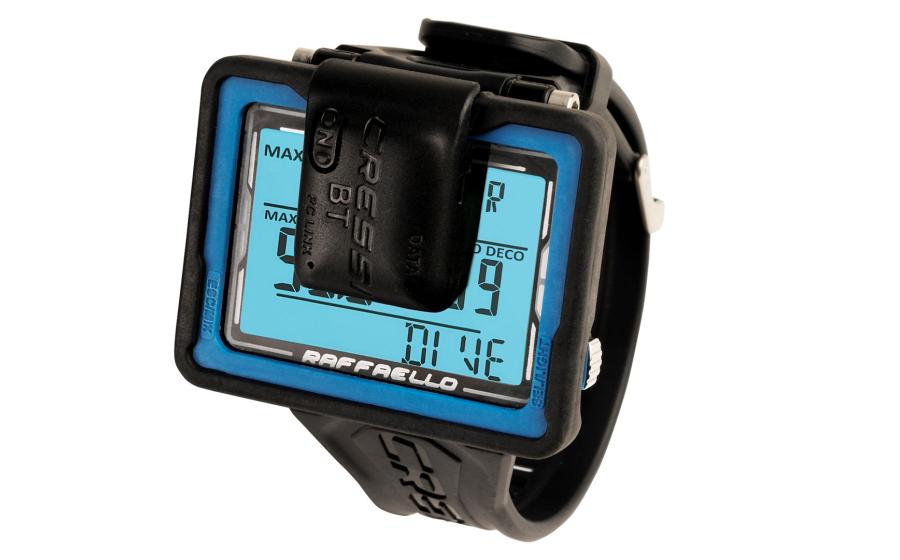ScubaLab: The Latest & Greatest Dive Computers
| September / October 2009 Issue Scuba Lab Review Quick Links |
|---|
| Hollis DG-O2| Mares Puck Air |
| Oceanic OC1| SCUBAPRO/UWATEC Galileo Luna |
| Sherwood Wisdom 2| SUUNTO Cobra 3 |
| SUUNTO Vyper Air| Tusa IQ-650 Element |
| Zeagle N2ition 3| |
The thing about dive computers is that, well, they’re computers, and like all electronic devices, they are constantly changing. Seems the minute ScubaLab finishes testing the latest and greatest data crunchers to hit the market, a brand-new crop appears sporting more goodies than their predecessors. Of the nine new computers included in this review, three are new to the market, and six are upgraded versions of models we’ve seen before, loaded with additional features.

This year’s dive computers offer something for everybody. From basic and inexpensive to feature packed and pricey, divers have a choice of big screens, small screens, three-color bar graphs, dot-matrix displays, increased battery life, larger memories and up to three gas mixes. Hoseless air-integration continues to be a hot item, on-board digital compasses have really come on strong, and some kind of Deep Stop feature can now be found on virtually every model. To tackle the massive job of evaluation, ScubaLab uses a testing protocol divided into four phases: Lab Work, Ocean Work, PC Downloads and Chamber Runs. We start off in the ScubaLab shop and pour over spec sheets and websites to familiarize ourselves with all the features and get all the facts. Then we fire up each computer, and with an owner’s manual in hand we dive into the system, scrolling through modes, searching out menus and setting parameters to prepare the units for our ocean work. DCs, dive gear, six test divers and a test supervisor are then loaded onto our official Body Glove test boat for two days of diving off Southern California’s coast. Armed with slates and score sheets, test divers evaluate each computer in seven categories, ranging from the ease of reading and understanding the display screens, to the efficiency of NDL bar graphs and ascent-rate warnings, to how well the backlights work. After our ocean dives, DCs and PC kits are turned over to our resident IT geek, who evaluates each PC-download system with a special eight-part test protocol. Finally, DCs are shipped to Catalina Island where they are submerged in a wet tank inside the hyperbaric chamber at the USC Marine Sciences facility. The computers are taken through a series of simulated dives to determine their liberal or conservative leanings.
Bonus Content
Digging Deep on 2009's New Dive Computers Bonus Review: Suunto’s Hel02 Technical DC/Dive Planner
| September / October 2009 Issue Scuba Lab Review Quick Links |
|---|
| Hollis DG-O2| Mares Puck Air |
| Oceanic OC1| SCUBAPRO/UWATEC Galileo Luna |
| Sherwood Wisdom 2| SUUNTO Cobra 3 |
| SUUNTO Vyper Air| Tusa IQ-650 Element |
| Zeagle N2ition 3| |
The thing about dive computers is that, well, they’re computers, and like all electronic devices, they are constantly changing. Seems the minute ScubaLab finishes testing the latest and greatest data crunchers to hit the market, a brand-new crop appears sporting more goodies than their predecessors. Of the nine new computers included in this review, three are new to the market, and six are upgraded versions of models we’ve seen before, loaded with additional features.

This year’s dive computers offer something for everybody. From basic and inexpensive to feature packed and pricey, divers have a choice of big screens, small screens, three-color bar graphs, dot-matrix displays, increased battery life, larger memories and up to three gas mixes. Hoseless air-integration continues to be a hot item, on-board digital compasses have really come on strong, and some kind of Deep Stop feature can now be found on virtually every model. To tackle the massive job of evaluation, ScubaLab uses a testing protocol divided into four phases: Lab Work, Ocean Work, PC Downloads and Chamber Runs. We start off in the ScubaLab shop and pour over spec sheets and websites to familiarize ourselves with all the features and get all the facts. Then we fire up each computer, and with an owner’s manual in hand we dive into the system, scrolling through modes, searching out menus and setting parameters to prepare the units for our ocean work. DCs, dive gear, six test divers and a test supervisor are then loaded onto our official Body Glove test boat for two days of diving off Southern California’s coast. Armed with slates and score sheets, test divers evaluate each computer in seven categories, ranging from the ease of reading and understanding the display screens, to the efficiency of NDL bar graphs and ascent-rate warnings, to how well the backlights work. After our ocean dives, DCs and PC kits are turned over to our resident IT geek, who evaluates each PC-download system with a special eight-part test protocol. Finally, DCs are shipped to Catalina Island where they are submerged in a wet tank inside the hyperbaric chamber at the USC Marine Sciences facility. The computers are taken through a series of simulated dives to determine their liberal or conservative leanings.
Bonus Content
Digging Deep on 2009's New Dive Computers Bonus Review: Suunto’s Hel02 Technical DC/Dive Planner
|September / October 2009 Issue Scuba Lab Review Quick Links| |---| |Hollis DG-O2| Mares Puck Air| |Oceanic OC1| SCUBAPRO/UWATEC Galileo Luna| |Sherwood Wisdom 2| SUUNTO Cobra 3| |SUUNTO Vyper Air| Tusa IQ-650 Element| |Zeagle N2ition 3| |









